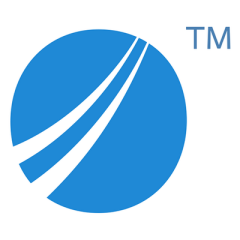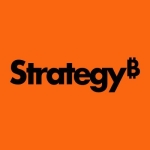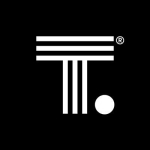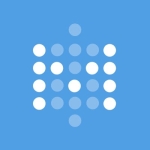Valuable Features
From an administrator’s standpoint, the most useful component is the Information Designer, which allows one to design links to SQL/Oracle/etc. datasets that query the source system when opened or refreshed. This provides the user base a self-service approach and ensures the query design is not something that jeopardizes the source system or warehouse.
From an end-user standpoint, the most useful features to me were data manipulation capabilities. Spotfire allows users to easily join multiple datasets (from Info Links, spreadsheets, etc.) and create calculations and visualizations against them. With a bit of experience, end users will find Spotfire wonderful for ad-hoc analysis. The other great capability is the extension with R allowing users with R code snippets more visual capabilities (comes with the Advanced Analytics module, I believe).
Improvements to My Organization
In my previous organization, Spotfire added a great deal of value by allowing Reservoir and Production Engineering teams self-service access to production and well data. Spotfire allowed our teams to query datasets for their analysis through the pre-defined lens that we had created in Spotfire. In addition, it allowed them to manipulate the data without introducing any risk to the source systems.
Room for Improvement
The administrative component of Spotfire could use some attention. The Information Designer tool is wonderful, but a level beyond that with hotfixes, updates, and security administration, things get complicated quickly. I have heard that other BI tools in the space are easier to administer.
There are basically two types of Spotfire administration, admin(s) who setup access to data and control the Spotfire library/ies, and admin(s) who manage the Spotfire server and component implementation. Usually, these are not the same person. The administration that involves setting up Data Sources, Data Elements, Filters, and Information Links comes very easily utilizing the Information Designer tool in Spotfire. The administration that is a pain is server administration, mainly because transferring Spotfire files/projects from one environment to another (test to prod during an upgrade) involves exporting the Spotfire library to file storage and then importing it into another Spotfire library. This was the approved method during my day. However, we ended up just doing database copy and refreshes to avoid that entire process.
It is unusual for IT to administer a software suite without the normal dev/test/prod processes. However, with Spotfire and some other BI tools, mass amount of end users create content only in the production environment. In many situations, a Spotfire admin would necessarily make library changes directly in the production environment because it is required to support their users. For Spotfire, it is important early on to define change control processes and procedures, to ensure quality control without limiting end user functionality (which is why you bought Spotfire to being with). Any changes to server or database configuration should go through normal test/prod processes but changes to the Spotfire library sometimes should not (because you are supporting a living and breathing thing with users creating and utilizing content).
Room for improvement would be more guidance up front on these real-world administration scenarios. I don't remember any guidance in these areas and ended up learning much of this the hard way. It is information that folks in the community share, but never gets formalized.
This only applies to enterprise implementations using Spotfire server, not stand alone installations not connecting to a Spotfire library.
Use of Solution
I have been using the solution for five years, including previous versions (5.0, 5.5, 6.0, 6.5). I haven’t used 7.5.
Stability Issues
We encountered a number of issues with certain Spotfire projects (.dxp files) after completing upgrades. These files were extremely complicated with R snippets running, and numerous datasets, transformations, and calculations being performed by the file. Spotfire allows users to create files that should not be created. In these cases, stability of a file is an issue. Stability and scalability of the solution itself is solid.
Customer Service and Technical Support
Customer Service:
Customer service is excellent, quick to respond and knowledgeable.
Technical Support:
Professional Services on the other hand is more questionable. I have had wonderful service from some technical staff, but I have also worked with some I would not wish on my worst enemy. It will be important for customers to find PSG resources they trust or to find another experience through a TIBCO partner, etc. I can suggest a number of these to anyone with interest.
Initial Setup
The initial setup is quite easy, made easier if you’re blessed with a good DW. Only when you start adding administrative features and distributed user bases with different security requirements does the solution become a pain to administer.
Implementation Team
Initial implementation was done before my time. I performed two major upgrades, one with the vendor on-site for two weeks, one alone. I had no issues with the one performed alone. That being said, new departments offering Spotfire as a solution will need support for their first couple hotfixes and upgrades. Refer to what I wrote regarding Professional Services.
Pricing, Setup Cost and Licensing
My previous employer purchased an enterprise license that accommodated our sharp spike in users (tripled user base in two years). Licensing the thick client versus the web developer or web consumer is critical for technical users. This is dependent upon the company and personnel using the tool. Technical users such as engineers or planners will most likely require the professional client. Light-touch users in organizations who’d rather receive a PDF than perform calculations and pivots will have web-client needs only. Picture MS Excel: If your users are Excel users, they will be thick-client/professional/expensive version users.
Other Solutions Considered
I’ve used other solutions in the space including Tableau and SAP BusinessObjects; even Excel and Access can roughly be considered a competitor of Spotfire. I prefer Spotifre to Tableau and BOBJ due to its flexibility and technical capability. Both Tableau and BOBJ seem more structured and stiff. Although beautiful, they sacrifice abilities for tech-savvy end users in return for a friendly-for-all, drag-and-drop, easy-to-print, set-it-and-forget-it-feel. In a bi-modal environment (one tool for key non-changing reports, a different tool for ad-hoc analysis), Spotfire wins the ad-hoc battle versus common competitors.
Other Advice
Spend time scoping the security/folder setup as well as the “Information Links” (queries Spotfire allows users to run). Changing either of these components after users construct their beautiful files against them is a very unpopular thing to do. Predict the dependencies you’re going to create and be strategic in your design.
Spotfire became everyone’s favorite tool if they could learn how to use it.
Disclosure: My company does not have a business relationship with this vendor other than being a customer.












Hi There,
Nice to be visiting your blog again, it has been months for me. Well this article that i’ve been waited for so long.
I have a data set of users and the date they have logged into the system. I want to show a cumulative chart which shows the number of new users of every month on top of returning users. I have attached a picture for reference. The X axis would be the Months and the Y axis would be the count of UserIds
THANK YOU!! This saved my butt today, I’m immensely grateful.
Cheers,
Preethi